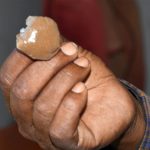Antiphospholipid Syndrome (APS) is a lifelong condition in which the immune system mistakenly creates antibodies that attack healthy tissues in the body. It is a multisystemic autoimmune disorder since it affects more than one body system.
There exist two major Antiphospholipid Syndrome (APS) types namely; Primary APS (APS without an autoimmune disease) and Secondary APS (APS with an autoimmune disease, such as Systemic Lupus Erythematosus (SLE)). There are hardly any official statistics on the disease burden in Kenya, but women are at risk for APS since they encounter it in both primary and secondary states, unlike men.
In addition, women in their reproductive years can develop either classical or obstetric APS. Of note, people with primary APS generally lead normal, healthy lives with the help of medication, and lifestyle changes.
The condition is characterized by the presence of Antiphospholipid Antibodies (APLAs) in the setting of blood clot formation or spontaneous abortions. These autoantibodies are directed against phospholipid-binding proteins. APS comprises the persistent presence of Antiphospholipid Antibodies (APLAs) in the setting of arterial and venous thrombus or pregnancy loss.
The commonest sites for venous and arterial thrombosis are the lower limbs, leading to Deep Venous Thrombosis (DVT), and cerebral arterial circulation, leading to Cerebrovascular Accidents (CVA), commonly known as stroke. However, any organ is prone to thrombosis.
There are also genetic risk factors, such as mutation of coagulation factors that play a major role in APS manifestation. Infections have also been associated with increased APLAs including; hepatitis C, HIV, COVID-19, and Epstein-Barr virus (EBV).
Drugs such as chlorpromazine (antipsychotic) and phenytoin (anticonvulsant) can induce APLAs production. Low levels of APLAs may also be present and may be short-lived, thus a need for a repeat test at least 12 weeks apart for diagnosis. APS can be classified according to manifestations namely;
Thrombotic APS: here a patient may present with DVT or neurological deficit depicting a CVA. The commonest presentation is a DVT.
Obstetric APS: Patient presentation may include Inter Uterine Fetal Death (IUFD), premature birth secondary to severe pre-eclampsia or multiple early pregnancy losses during the first trimester and persistent laboratory criteria For APLA.
Catastrophic APS: It’s a rare yet life-threatening thrombotic complication affecting many organs.
In addition to the physical manifestations that APS causes, victims also suffer emotionally. While APS often is thought to affect adults between 30 and 50 years, there also exist outliers – mostly adolescents and young adults.
The diagnosis of APS affects victims’ future outlook. They always live fully dependent on lifelong blood thinners. Victims also live in fear of uncertain physical health, fertility, and ability to lead a normal life resulting in anxiety, depression, and hopelessness.
Therefore, these people need strong social support as this condition requires regular blood tests for APLAs levels monitoring, frequent medical visits, and lifestyle adjustment to prevent any clotting leading to emotional strain.
Moreover, depression in APS patients can originate from both biological and physiological factors. Research has it that, the presence of APLAs may affect the brain’s functioning. There exists a strong association between APS with psychosis and mood disorders. These neuropsychiatry symptoms are a result of microclots that emanate from autoimmunity. Of note, APS is a predisposing factor for depression. APS victims may choose to stay mum over speaking out.
The fact that they never meet the community’s cultural expectations such as getting married and having children they are prone to stigma and segregation which results in depression. Consequently, depression worsens APS. For instance, flare-ups of APS symptoms are exacerbated by anxiety and stress.
In addition, depressed APS victims are usually hopeless this boils down to non-adherence to blood thinners thus increasing life-threatening clotting events.
To address these far-reaching implications of depression in young calls for a holistic approach. Incorporation of both pharmacological and psychological care is of essence. First things first, early identification of depression in APS victims is key. Secondly, mental health professionals are crucial at this point since they are meant to help provide coping mechanisms and emotional support. The interventions may include antidepressants alongside anticoagulants, educating and empowering victims about APS, participation in support groups, and the existence of a good support system.
In conclusion, battling APS in young women can be a tall order. The linkage between APS and depression highlights the need for comprehensive care both pharmacological and mental well-being. This will enable those struggling with APS to live hopeful lives save for the complications they are prone to.
Dr Rachel Kerubo is the Resident Medical Officer – Department of Internal Medicine, Nyamira County Referral Hospital





















